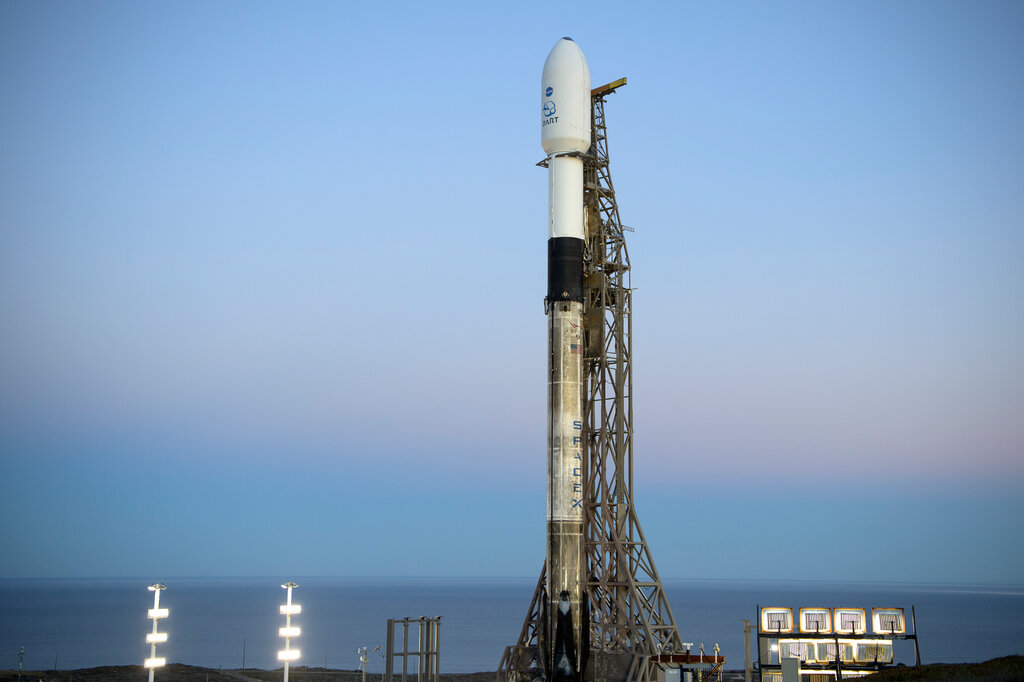NASA launched a spacecraft on Wednesday with a straightforward mission: smash with an asteroid at a speed of 15,000 miles per hour.
The project, known as the Double Asteroid Redirection Test, or DART, was launched from Earth in order to determine if crashing a spacecraft with an asteroid might cause it to veer off course. If the test is successful, the results will be useful if NASA and other space organisations are ever called upon to deflect an asteroid in order to preserve the planet and prevent a catastrophic collision with the planet.
The DART satellite was launched from the Vandenberg Space Force Base in California on Wednesday at 1:21 a.m. Eastern time (or 10:21 p.m. local time) aboard a SpaceX Falcon 9 rocket. The rocket successfully reached orbit before returning its reusable booster to the ocean and landing on a drone ship operated by SpaceX. It will take around one hour to place the spacecraft in orbit, and it will take several hours after that to deploy solar panels to provide electricity for the vehicle throughout its voyage.
It began at 12:30 a.m. on Wednesday and will continue until the spacecraft is launched into orbit, according to NASA’s YouTube page. Alternatively, you may see it in the video player linked below. SpaceX also has its own live video stream from the launchpad, which you can watch here.
For those in Southern California who are lucky enough to have clear night sky, NASA has published a map to the locations where they may be able to view the spacecraft as it departs the atmosphere.
During the crash of the DART spacecraft into an asteroid, NASA will put a planetary defence strategy to the test for the first time, which might one day spare a city, or perhaps the whole world, from the effects of a devastating asteroid impact.
If all goes according to plan with DART, NASA will have a verified weapon in its arsenal of planetary defence technologies. Should a separate asteroid ever find itself on a collision path with the planet, the world’s space agencies would be confident that an asteroid missile such as DART would be able to deflect the space rock away from the planet’s atmosphere.
When the spacecraft is sent into orbit around the sun, it will complete almost one full circle around the sun before coming into contact with Dimorphos, an asteroid the size of a football field that closely surrounds a larger asteroid known as Didymos every 11 hours and 55 minutes. A binary system is formed by those two asteroids, whereby one is a mini-moon to the other, according to astronomers. Two full orbits around the sun are completed by the two asteroids every two years when they are together.
Dimorphos is not a danger to Earth, and the mission is mostly intended to serve as target practise. In late September or early October of next year, DART will make contact with the planet since it will be at its closest point to the planet, about 6.8 million miles away, at that time.
As a result, Earth-based telescopes will focus their lenses on the impact location, which will reveal the two asteroids as tiny spots of reflected sunlight. Astronomers will track the time between one flicker of light — which indicates that Dimorphos has passed in front of Didymos — and another flicker of light — which indicates that Dimorphos has orbited behind Didymos — in order to determine whether DART’s impact on Dimorphos altered the orbit of Dimorphos around Didymos.
As an added precaution, NASA maintains the Sentry Risk Table, which is a distinct list of asteroids that have a greater possibility of colliding with the planet (though the chances remain extremely low). Among those celebs is Bennu, an asteroid with a gravelly surface and an acorn-shaped form that is around the size of a skyscraper. A 0.057 percent possibility exists that it will make an impact on the Earth anytime between the years 2178 and 2290.
OSIRIS-REx is a NASA spacecraft that was launched to Bennu last year with the mission of collecting a suitcase’s worth of rock samples and returning them to the Earth in September 2023.

